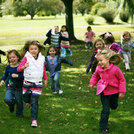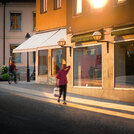Atchley Ruth A., Strayer David L., Atchley Paul. (2012) Creativity in the Wild: Improving Creative Reasoning through Immersion in Natural Settings. PLoS ONE 7(12): e51474. doi:10.1371/journal.pone.0051474
Fast Fact Library
Branas, Charles C., Rose A. Cheney, John M. Macdonald, Vicky W. Tam, Tara D. Jackson, and Thomas R. Ten Have. “A Difference-in-Differences Analysis of Health, Safety, and Greening Vacant Urban Space.” American Journal of Epidemiology 174, no. 11 (November 2011): 1296–1306. https://doi.org/10.1093/aje/kwr273.
Berhane, Kiros, Brady, Kirby, Chang, Roger, Dahmann, Nicholas, Gilliland, Frank, Jerrett, Michael, McConnell, Rob, Reynolds, Kim, Su, Jason G., Wolch, Jennifer. (2011) Childhood obesity and proximity to urban parks and recreational resources: A longitudinal cohort study. Health & Place 17, 207-214.
Kuo, Frances E. (2001). Coping with poverty: Impacts of environment and attention in the inner city. Environment & Behavior, 33(1), 5-34.
Matusoka, Rodney H. (2010). Student Performance and High School Landscapes: Examining the Links. Landscape and Urban Planning 97, 4: 273-282.
Watkins, Nicholas, Frances Cole, and Sue Weidemann. (2010). The war memorial as healing environment: The psychological effect of the Vietnam Veterans Memorial on Vietnam War combat veterans’ posttraumatic stress disorder symptoms. Environment and Behavior 42(3), 351-375.
Merom, Dafna, Adrian Bauman, Philayrath Phongsavan, Ester Cerin, Mazen Kassis, Wendy Brown, Ben J. Smith, and Chris Rissel. (2009). Can a motivational intervention overcome an unsupportive environment for walking – findings from the Step-by-Step Study. Annals of Behavioral Medicine 38(2), 137-146.
Stratus Consulting. (2009). A Triple Bottom Line Assessment of Traditional and Green Infrastructure Options for Controlling CSO Events in Philadelphia’s Watersheds. Office of Watersheds, City of Philadelphia Water Department, Philadelphia, PA.
Taylor, Andrea Faber, and Frances E. Kuo. “Children With Attention Deficits Concentrate Better After Walk in the Park.” Journal of Attention Disorders 12, no. 5 (2009): 402–9. https://doi.org/10.1177/1087054708323000.
Sugiyama, Takemi, Catharine Ward Thompson, and Susana Alves. (2009). Associations Between Neighborhood Open Space Attributes and Quality of Life for Older People in Britain. Environment and Behavior, 41(1), 3-21.









